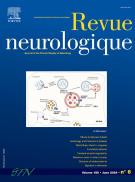Artificial intelligence for the detection of interictal epileptiform discharges in EEG signals - 11/04/25

Abstract |
Introduction |
Over the past decades, the integration of modern technologies — such as electronic health records, cloud computing, and artificial intelligence (AI) — has revolutionized the collection, storage, and analysis of medical data in neurology. In epilepsy, Interictal Epileptiform Discharges (IEDs) are the most established biomarker, indicating an increased likelihood of seizures. Their detection traditionally relies on visual EEG assessment, a time-consuming and subjective process contributing to a high misdiagnosis rate. These limitations have spurred the development of automated AI-driven approaches aimed at improving accuracy and efficiency in IED detection.
Methods |
Research on automated IED detection began 45 years ago, spanning from morphological methods to deep learning techniques. In this review, we examine various IED detection approaches, evaluating their performance and limitations.
Results |
Traditional machine learning and deep learning methods have produced the most promising results to date, and their application in IED detection continues to grow. Today, AI-driven tools are increasingly integrated into clinical workflows, assisting clinicians in identifying abnormalities while reducing false-positive rates.
Discussion |
To optimize the clinical implementation of automated AI-based IED detection, it is essential to render the codes publicly available and to standardize the datasets and metrics. Establishing uniform benchmarks will enable objective model comparisons and help determine which approaches are best suited for clinical use.
Le texte complet de cet article est disponible en PDF.Keywords : Electroencephalogram, Interictal epileptiform discharges, Automated detection, Machine learning, Deep learning, Convolutional neural networks.
Plan
Bienvenue sur EM-consulte, la référence des professionnels de santé.
L’accès au texte intégral de cet article nécessite un abonnement.
Déjà abonné à cette revue ?

